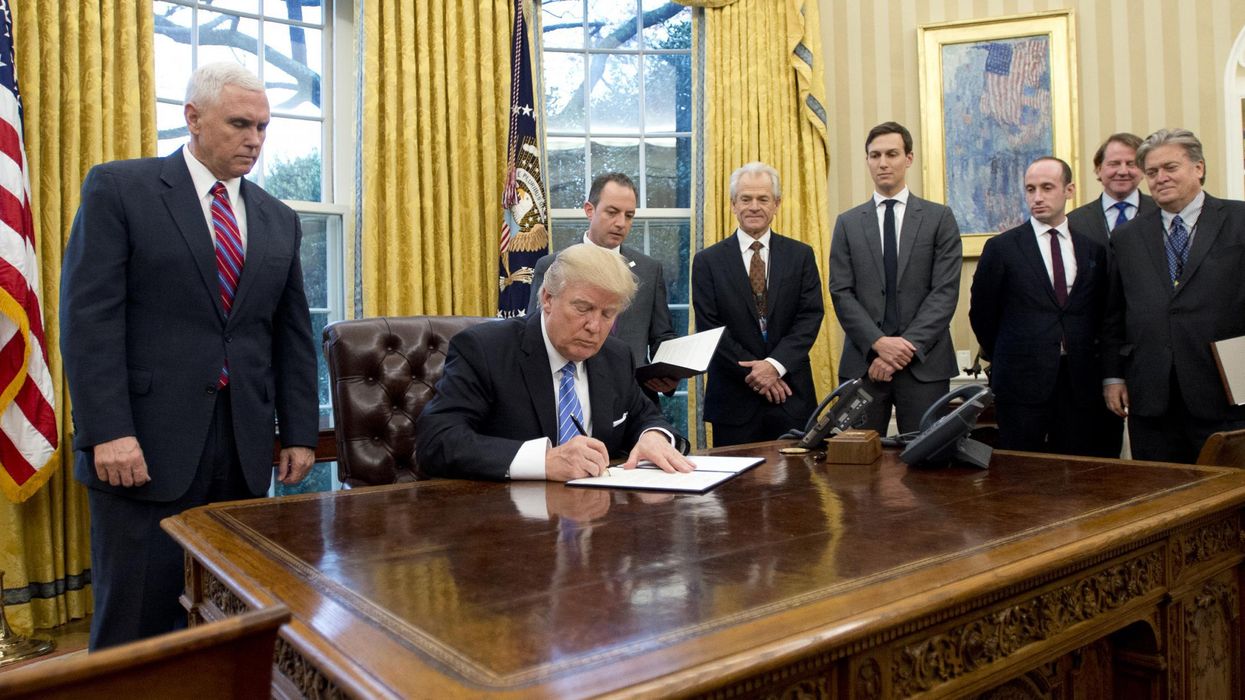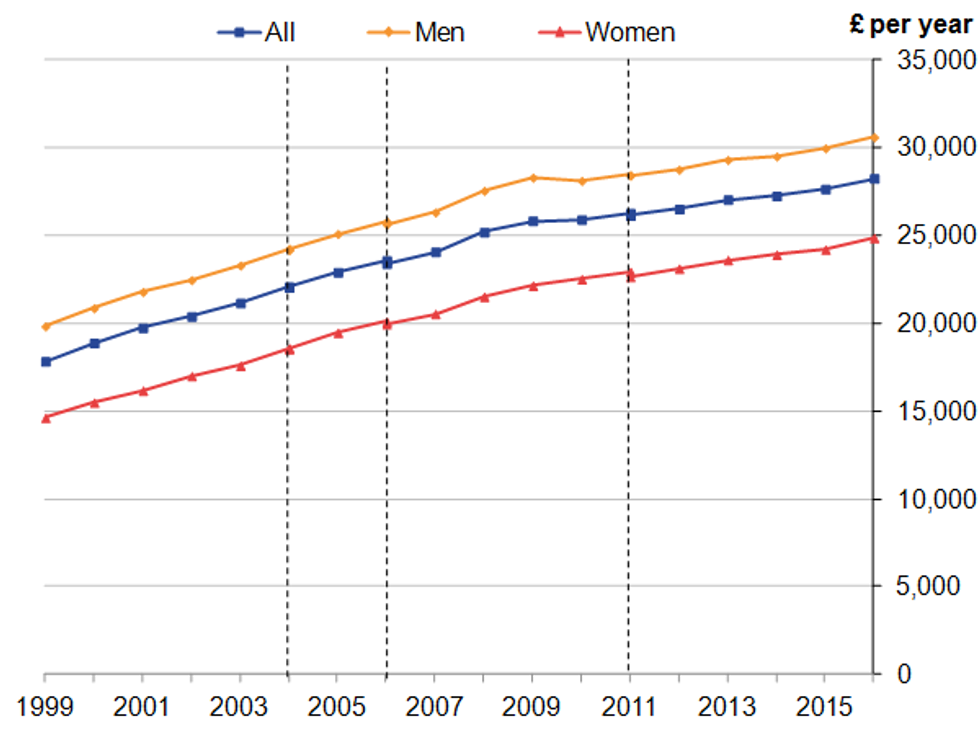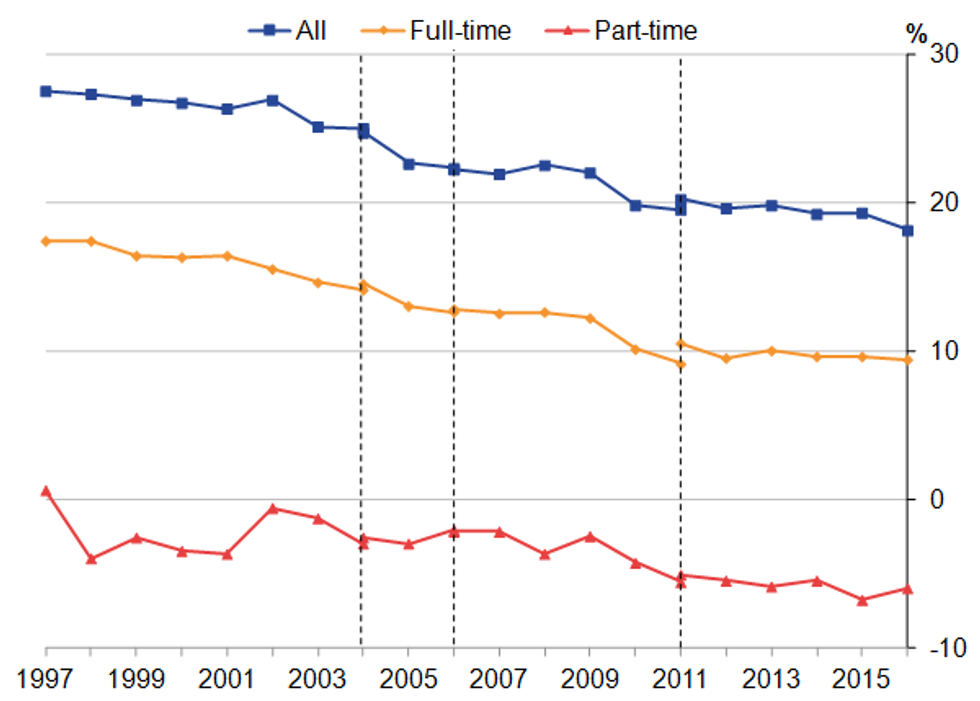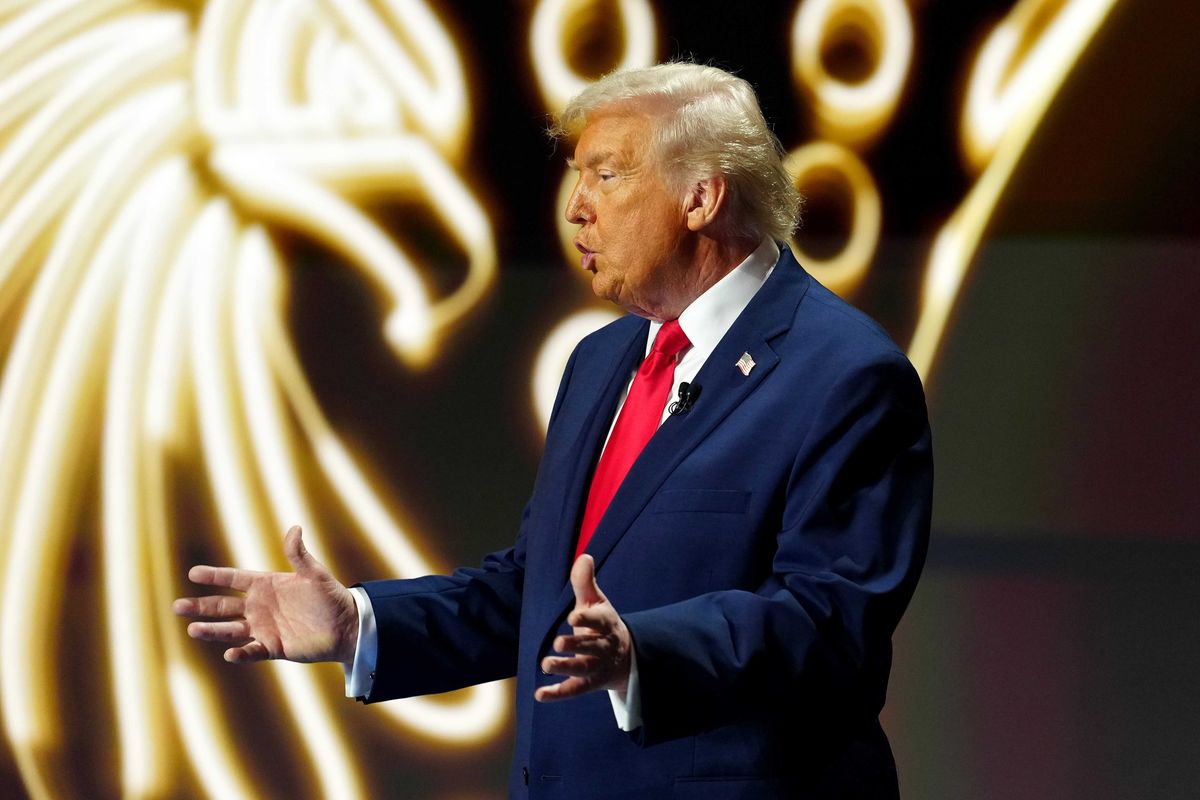Celebrities
Indy100 Staff
Apr 04, 2017

Picture:
Ron Sachs - Pool/Getty Images
On March 27, President Donald Trump revoked Barack Obama's 2014 Fair Pay and Safe Workspaces executive order.
As we've discussed this had a negative effect on LGBT civil rights.
It also affected women workers, as the Fair Pay and Safe Workspaces order included two key rules:
- Paycheck transparency
- A ban on forced arbitration clauses for sexual harassment, assault or discrimination claims
The real kicker?
This falls very close to equal pay day.
Equal pay day is celebrated in each country on the day that the average woman would earn what the average man earned in the previous year.
For the US, that day falls on 4 April. In the UK it would be 18 March, as the gap in earnings sits at 17.4 per cent in the UK. For full time workers it is 9.4 per cent.
Under the Equal Pay Act of 1970 it's illegal to discriminate in terms of pay and conditions of employment between the sexes. Unequal pay in the workplace has been illegal for 45 years.
If you're not being paid equally, you can claim up to a maximum of six years of lost earnings.
The 'Pay Gap' as a result is, in effect, an earnings gap between the average woman and man in the country, as a result of the industries they work in, conditions for progression, and a lack of representation of women in high paying roles comparative to men.

The Government Equalities Office, which releases regular data about the gender pay gap, defines its causes as follows:
- A higher proportion of women choose occupations that offer less financial reward (e.g. administration). Many high paying sectors are disproportionately made up of male workers (e.g. information and communications technology).
- A much higher proportion of women work part-time, and part-time workers earn less than their full-time counterparts on average.
- Women are still less likely to progress up the career ladder into high paying senior roles.
As such, these bullet points are the issues to resolve to make average pay between men and women equal - by encouraging women's representation in higher paid industries, in full time employment and improving access to senior roles.
This graph illustrates how full-time and part-time career choices affect the earnings averages - women earn more than men when it comes to part-time work:
41 per cent of women work part-time, compared to only 12 per cent men.
In addition, placing greater onus on men in terms of childcare in heterosexual families and destigmatising paternal leave and stay-at-home dads, as well as childcare solutions, could go a long way to easing the effect starting a family can have on a woman's career, and thus on the pay gap.
Plus, high paying senior roles remain dominated by men.
More: Donald Trump just U-turned spectacularly on LGBT rights
Top 100
The Conversation (0)














